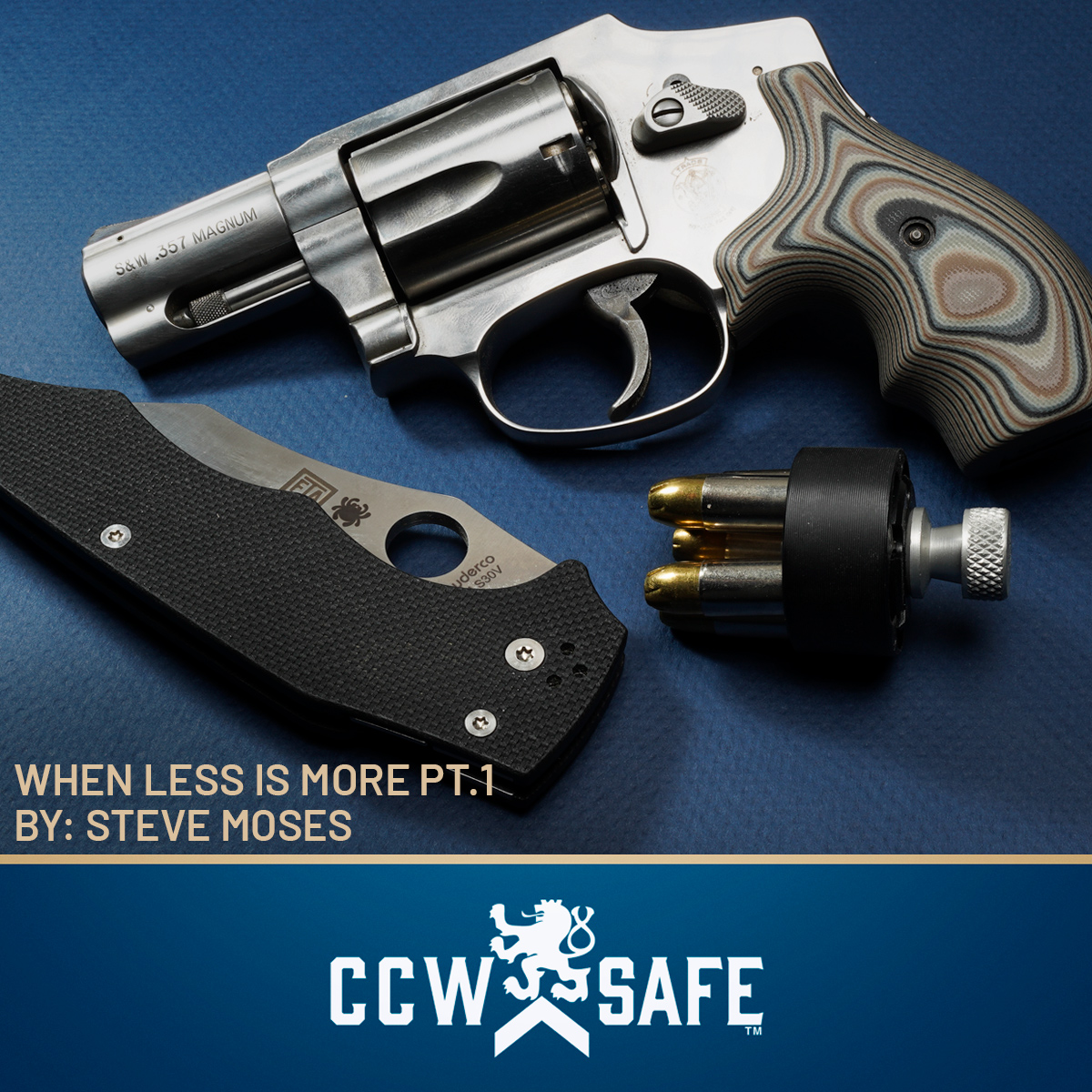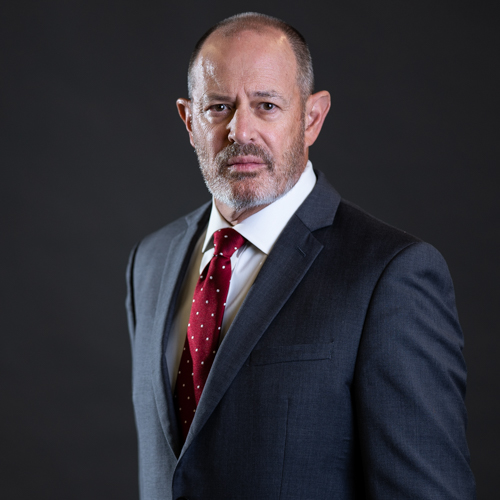
Posted on July 18, 2022
When Less is More Part 1
“Carrying normal earth people simple gear is nice when I am not in work mode or urban crime mode. I saw a trend with many of the older, VERY experienced guys who have spent several decades immersed in high level violence and dealing with criminals at the highest levels. I am seeing a trend with these folks that is right down the line for my life as well. Many are carrying sub-compact or compact service size, very capable 9 mm pistols most of the time when out in the world and then down-sizing to a small lightweight revolver for a “Rule One” gun (rule one of gunfighting, have a gun). The overwhelming opinion was a sad state of affairs in which these very well trained and experienced folks are no longer willing to get involved in much other than defending themselves and immediate family. All are also carrying knives as a supplement, and I am seeing most also now carrying OC spray, myself included.”
-Darryl Bolke, former law enforcement officer and well-respected firearms trainer
In early 2020 I moved to the country in a low-crime Texas county and resigned my peace officer commission. I spend much of my time at home and seldom venture into high-crime areas. One of the major changes that I have made to my lifestyle is to downsize the gear that I carry on my person much of the time. While this might not be true for all concealed carriers, I would speculate that at least some of the time they are spending time in areas where the crime rates are low, working in offices and stores where concealed carry is discouraged and extreme covert carry is the only option, and maybe just for hanging around in the backyard or going for a walk. As Darryl said above, Rule One is have a gun. Of course, any gun worth having has to be reliable and reasonably user-friendly. Over time I have adopted a more minimalist approach to everyday carry (“EDC”) and whenever possible carry no more tools than I think will be adequate for whatever my plans (or possibly lack thereof) are for the day.
I do a threat assessment everyday (probably sub-consciously most of the time). Where am I, what will I be doing, and where will I be later in the day are some of the questions that should at least be given some consideration. If the answer is that at no point in the day the area that I will be spending time in or driving through a high-crime area, then I am going to carry upon my person the smallest firearm that I can still shoot well. This is especially true in warmer weather when I am wearing lightweight tee shirts, and I think the same is likely true for women that often wear lightweight garments or clothes that do not lend themselves well to conventional belt-worn holster carry. Darryl Bolke recently wrote an article about the “Snubby Lifestyle” and participated in several podcasts in which he made an excellent case for small handguns that could be carried in a pocket holster (he is particularly fond of small-framed revolvers).
I have two handguns that I particularly like for minimalist carry. One is a Smith and Wesson 442 snub-nose .38 Special revolver, and the other is a Glock 42 in .380 caliber. Both have positives, and both have negatives. One thing they both have in common is that I can readily carry them in a pocket holster and both do a reasonably good job of disappearing under a tee shirt when mated with a well-designed holster designed to be worn inside the waistline. I would suspect that the same might be true for women whose manner of dress can vary between yoga pants, jeans, shorts, dress slacks, skirts, and dresses. Both firearms have relatively small profiles and are light in weight, yet both allow most concealed carriers to achieve what firearms instructor Hany Mahmoud refers to as “a full handful of grip on the gun.”
I had been carrying the Smith and Wesson 442 as my minimalist EDC handgun for years (the worn finish is stark evidence) and recently started carrying a Glock 42 initially as an experiment. I grew up reading about the anemic performance of the .380 round but had recently stumbled across some ballistic gel performance tests that made me take a second look, most especially in light of what I have learned over the years about the actions most often taken by violent criminal offenders upon being shot.
Neither of the firearms mentioned when paired with my preferred ammunition will pass the FBI Test Protocol, which involves shooting 10% ordnance gelatin uncovered and through heavy clothing, two pieces of 20-gauge steel, wallboard, plywood, and laminated automobile glass. In order to pass the test, the ammunition must expand and penetrate at least 12 inches and no more than 18 inches. I made sure that I carried ammunition capable of meeting those requirements when I was working as a law enforcement officer for the simple reason that I was constantly in an environment where contact with dangerous criminals in and around vehicles and in homes and apartments was far more likely than it was as a concealed carrier. Having said that, there is .38 Special ammunition and .380 ammunition that appears to be capable of meeting or close to meeting those requirements when shot through both gelatin that is both uncovered and covered with heavy clothing, which is a far more likely scenario for concealed carriers.
Part Two of this article discusses the reasons that I first became interested in a small-frame sub-caliber semi-automatic pistol and why lightweight small-frame revolvers make especially good choices for pocket holster carry.

STEVE MOSES BIO:
Steve Moses has been a defensive firearms trainer for over 26 years and is a licensed Texas Personal Protection Officer with 7 years of experience performing as shift lead on a church security detail for a D/FW area metro-church. Steve is a co-owner and Director of Training for Palisade Training Group, LLC based in Dallas, Texas. Moses is a retired deputy constable and spent over 10 years on a multi-precinct Special Response Team. He owns multiple instructor certifications, including Rangemaster Advanced Handgun Instructor and Defensive Shotgun Instructor, Red Zone Knife Defense Instructor and Adaptive Striking Foundations Instructor, Modern Samurai Project Red Dot Sight Instructor, and State of Texas Personal Protection Officer Instructor. Steve holds a BJJ Brown Belt in Relson Gracie Jiu Jitsu. He is a content contributor for CCW Safe and writes weekly articles on various subjects of interest to concealed carriers. Moses shoots competitively and holds an IDPA Expert rating. Steve is an annual presenter at the Rangemaster Tactical Conference.